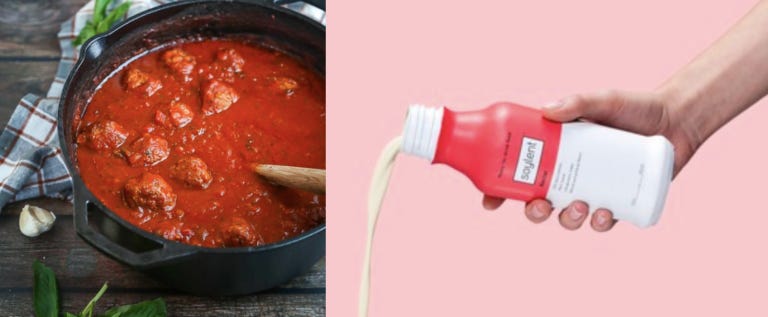soylent is the most telic food
This fall, my brother and I took a productivity course through Rad Reads with Khe Hy. The course allowed us to chat with other folks about how to think about productivity and how it would fit into our lives. Ben and I would also spend hours offline chatting through similar thought patterns, like we have for many years before starting Mez.
One of the classes centered around this idea of telic and atelic activities. The word comes from the Greek word, telos, meaning “goal”, and so these activities would have a goal in mind, or not. Even activities I think of as atelic, like running, I wouldn’t ever consider just running without a tracker or headphones. How could I show off my progress? At the same time, I love the runner’s high and the meditative feeling that comes along with going out at an easy pace. How many podcasts do I put on because I’m going to learn something from them rather than just enjoying the sound around me or the task at hand? It was an interesting framework and, while necessarily groundbreaking, it grounded me again in thinking about being mindful of an activity, regardless of the end in mind.
Now as we continued walking through this discussion, Khe had mentioned he had asked ChatGPT 4 to explain Soylent from the lens of an Italian chef. Everyone loves playing with AI’s while they have the credits and who knows how he got to this point. But the issue was ChatGPT had a difficult time giving a solid explanation because the two are pretty at odds. Soylent is such a product of modern American life and is the perfect telic food. “I need nutrients and I can’t take a break. Let me have this faceless bottle of functional nutrition to get back to my productivity-driven world.” Look, I’ve had them in a pinch and they give you mouth pleasure for the 10 minutes you take to slug it down, but this isn’t exactly a Sunday sauce.
What I’m left with here is that food and dining are also telic and atelic activities in our modern age. I don’t like admitting that. What I do ask of folks is to recognize when and why they are putting a specific meal in these two categories. Sit and taste, smell, and hone in on the texture of what’s in front of you and what’s in your hand. Look and listen to the person across from you about their day and their experience of what sits in front of them as well. Take in the music at the restaurant and what the cooks are doing in the back of house. And if you really need to, pop in those headphones, guzzle down a strawberry soy milk container and stay productive.




